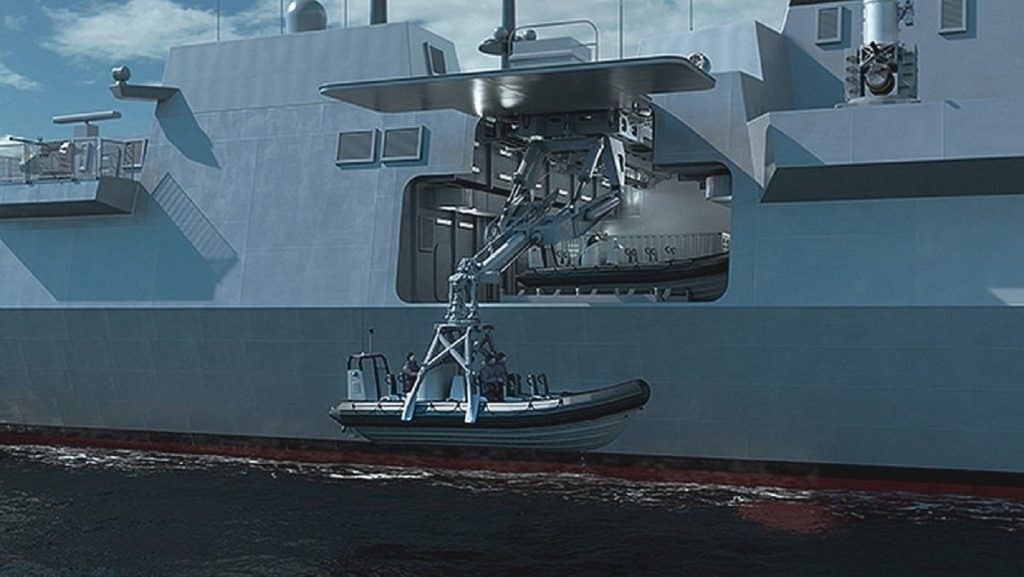Rolls-Royce will provide its Mission Bay Handling System (MBHS) capability to all eight frigates in the UK Royal Navy’s Type 26, City-class fleet.
The lead contractor for the programme, BAE Systems Surface Ships, signed a deal for five more MBHS units in the second batch of ships, on top of the three that the supplier is already contracted to deliver, according to a Rolls-Royce statement on 13 August 2024.
Each of these systems will be manufactured at the company’s Canadian Naval Handling Centre of Excellence based in Peterborough, Ontario.
The Type 26 City-class is split into two batches. For the Royal Navy, its first three warships – HMS Glasgow, Cardiff and Belfast – belong to the first batch. The five remaining vessels – HMS Birmingham, Sheffield, Newcastle, Edinburgh and London – while identical to Batch 1, incorporate lessons learned in their construction.
Construction of all of the City-class is expected to be completed by the mid-2030s, with HMS Glasgow, the first in class, entering service by the end of 2028. Designed for a service life of at least 25 years, the fleet will serve into the 2060s.
Ian Brown, a specialist at Defence Equipment and Support, the UK government procurement agency, commented: “I look forward to the future of installing and working on HMS Glasgow, then handing over to the Navy to provie its full capabilities and functionality.”
MBHS renders a ship’s mission bay into a multi-purpose, flexible space allowing it to adapt to a variety of operational situations. Rolls-Royce’s MBHS offers an integrated solution for handling and stowing cargo, munitions, unmanned and manned offboard craft. There is a growing military demand for autonomous vehicles above, on and below the surface.
Navies are beginning to create ‘hybrid’ fleet structures in the interest of enhancing survivability, increasing efficiency, and reducing the long-term costs of naval operations. The global military uncrewed maritime vehicles market, valued at $1.7bn in 2024 is projected to grow at a compound annual growth of 8.9% over the forecast period. It is expected to reach $4.1bn by 2034 and cumulatively value $29.3bn over the forecast period.
Ukraine has also proven the asymmetric advantage of uncrewed surface vessels against larger, more costly Russian warships in the Black Sea – such as corvettes and destroyers, among other ship types.
Likewise, the precisely controlled hydraulic boom will efficiently and safely deploy and retrieve manned/unmanned surface vessels in challenging sea conditions up to sea state six.









